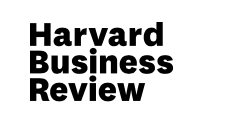HBR Stakeholder Case Study First in Major Media to Map Out Practical Roadmap
 A case study in the prestigious Harvard Business Review (HBR) by Bain & Company executives provides an excellent blueprint for the implementation of stakeholder management 100% aligned with the framework developed by the Enterprise Engagement Alliance 13 years ago and the work of other stakeholder management pioneers. While the client declined for competitive reasons to have its name used, the information proved was reportedly vetted by HBR editors.
A case study in the prestigious Harvard Business Review (HBR) by Bain & Company executives provides an excellent blueprint for the implementation of stakeholder management 100% aligned with the framework developed by the Enterprise Engagement Alliance 13 years ago and the work of other stakeholder management pioneers. While the client declined for competitive reasons to have its name used, the information proved was reportedly vetted by HBR editors.By Bruce Bolger
 The authors of How to Create a Stakeholder Strategy, published in the May-June edition of the Harvard Business Review, provide a concise, practical guide to the implementation of Stakeholder Capitalism using an actual case study. (Ordinarily it is the policy of ESM to only publish case studies of companies that can be named, but this was vetted by the highlly credited HBR.) Indeed, the article by Darrell Rigby, a partner in the Boston office of Bain & Company; Zach First, partner in the Los Angeles office, Dunigan O’Keeffe, a partner in San Francisco, offers a useful data-driven approach to design, measurement, and implementation almost 100% aligned with the processes developed by the Enterprise Engagement Alliance over the last 13 years in collaboration with dozens of business professionals and academics as well as by other academics and practitioners. The article also demonstrates the extent to which stakeholder thinking went into the new European Union Corporate Sustainability Repording Directive.
The authors of How to Create a Stakeholder Strategy, published in the May-June edition of the Harvard Business Review, provide a concise, practical guide to the implementation of Stakeholder Capitalism using an actual case study. (Ordinarily it is the policy of ESM to only publish case studies of companies that can be named, but this was vetted by the highlly credited HBR.) Indeed, the article by Darrell Rigby, a partner in the Boston office of Bain & Company; Zach First, partner in the Los Angeles office, Dunigan O’Keeffe, a partner in San Francisco, offers a useful data-driven approach to design, measurement, and implementation almost 100% aligned with the processes developed by the Enterprise Engagement Alliance over the last 13 years in collaboration with dozens of business professionals and academics as well as by other academics and practitioners. The article also demonstrates the extent to which stakeholder thinking went into the new European Union Corporate Sustainability Repording Directive.  The topic of Stakeholder Capitalism has received considerable attention and debate in theory over the last few years, but the EEA has not been able to find others focused on the practical application of its principles at the front-lines of business as these authors have accomplished in a relatively few number of words. Their article is particularly refreshing because it clearly demonstrates that Stakeholder Capitalism has nothing to do with “woke capitalism” but rather focuses on how to sustainbly enhance shareholder returns by creating value for customers, employees, distribution and supply chain partners, and communities in a way that is a win-win for society, investors, and other stakeholders. There is no mention of making contributions to ad hoc social causes or of corporate social “responsibility.”
The topic of Stakeholder Capitalism has received considerable attention and debate in theory over the last few years, but the EEA has not been able to find others focused on the practical application of its principles at the front-lines of business as these authors have accomplished in a relatively few number of words. Their article is particularly refreshing because it clearly demonstrates that Stakeholder Capitalism has nothing to do with “woke capitalism” but rather focuses on how to sustainbly enhance shareholder returns by creating value for customers, employees, distribution and supply chain partners, and communities in a way that is a win-win for society, investors, and other stakeholders. There is no mention of making contributions to ad hoc social causes or of corporate social “responsibility.”.jpeg) In fact, they write, “Take Costco, whose co-founder and former CEO, Jim Sinegal, faced constant pressure to reduce value for his customers and employees and transfer more to shareholders. He refused, famously explaining the company’s strategy to the Motley Fool this way: ‘We’ve got essentially four things to do in our business: We have to obey the law, we’ve got to take care of our customers, take care of our people, and respect our suppliers. We think if we do those four things, pretty much in that order, that we’re going to do what we have to do in the long term, which is to reward our shareholders. We think it’s possible to reward them without paying attention to those four things in the short term, but if you don’t pay attention to them in the long term, we think you stub your toe somewhere along the line.’”
In fact, they write, “Take Costco, whose co-founder and former CEO, Jim Sinegal, faced constant pressure to reduce value for his customers and employees and transfer more to shareholders. He refused, famously explaining the company’s strategy to the Motley Fool this way: ‘We’ve got essentially four things to do in our business: We have to obey the law, we’ve got to take care of our customers, take care of our people, and respect our suppliers. We think if we do those four things, pretty much in that order, that we’re going to do what we have to do in the long term, which is to reward our shareholders. We think it’s possible to reward them without paying attention to those four things in the short term, but if you don’t pay attention to them in the long term, we think you stub your toe somewhere along the line.’”Here are other key insights from the HBR article.
The rise of stakeholder thinking. “Lately companies have come to recognize the limitations of the view that they must create value only for shareholders. Recognizing that every stakeholder has an impact on other stakeholders—engaged employees improve customer satisfaction, which in turn helps accelerate profitable growth, and so on—are any stakeholders safe to neglect?”
The economics. “The companies that create the greatest total value across all dimensions of performance don’t do so at the expense of shareholder value. For example, the Drucker Institute’s annual rankings, published in conjunction with the Wall Street Journal, combined with S&P Global analyses, show that a portfolio of the 200 most effective creators of stakeholder value in the S&P 500 Index consistently delivers total shareholder returns as high as those of the entire index. In addition, over the past decade the 100 companies on the S&P/Drucker Institute Corporate Effectiveness Index, which consists of S&P 500 firms that are the best at creating value through ‘excellence in employee engagement and development, customer satisfaction, social responsibility, innovation, and high-quality earnings,’ delivered total shareholder returns that were more than 200 basis points higher per year, on average, than those of the S&P 500.”
They continue, “JUST Capital’s data suggests the same thing. Since 2016 the nonprofit has been rating companies in the Russell 1000 Index on their impact on workers, communities, shareholders, customers, and the environment. Those in the top 50% of its rankings in each industry are included in the JUST US Large Cap Diversified Index, whose returns have topped the Russell 1000’s returns by 6.55% since its inception. Some venerable companies in the index, such as Procter & Gamble (founded in 1837) and Merck (founded in 1891), create consistently high value for multiple stakeholders. It stands to reason that such firms are more likely to generate long-term shareholder value than flashier companies rife with burned-out employees and distrustful customers.
“Companies that create strategies to benefit all stakeholders and establish systems for implementing them build businesses that are more successful and resilient. They reduce the risks of customer defections, employee turnover, loss of shareholder confidence, community protests, harsh regulations, and competitive disruptions—any of which can be crippling. Moreover, as executives at companies that have adopted stakeholder strategies, such as Costco, Microsoft, and P&G, can attest, a stakeholder-based approach to running a business can make leadership roles more meaningful and rewarding.”
CEOs do not know how to proceed. “Hundreds of high-profile CEOs—including 181 who signed a 2019 Business Roundtable statement on the purpose of the corporation—are pledging to lead their companies for the benefit of all stakeholders: customers, employees, suppliers, communities, and shareholders. Few, however, have disclosed explicit strategies for how they will do that. Most seem to be relying on intuitive approaches, which are hard to scale up and sustain because they’re based on leaders’ gut feelings about what matters most rather than specific criteria that can be codified to make delegated decision-making consistent and aligned with leadership’s strategic intent. Worse, when leaders whose personal visions have guided their companies leave their organizations, they take their intuitive strategies and commitment with them.”
Conduct an objective self-assessment. The authors recommend a process described in the article using common standards such as NPS scores, Glassdoor, JD Powers, American Customer Satisfaction Index studies, Sustainalytics, independent rating agencies such as the Drucker Institute, JUST Capital, and the Coalition for Inclusive Capitalism all of whom look at the inter-relationships between shareholder interests. Test the validity of those scores against the organization’s own assessment, as well as the needs of specific stakeholders and their contribution to organizational success. The result should be the development of an organization’s own metrics.
Develop a stakeholder strategy. Once the assessment is complete, “you can begin crafting your stakeholder strategy, which should provide a clear description of your company’s purpose, establish criteria for evaluating progress toward it, determine priorities among stakeholders, and measure value creation for each stakeholder group.”
Design and implement a system. “Create systems to sustain your stakeholder strategy. To succeed, a strategy must be able to outlast the enthusiasm and tenure of any individual executive. This means you need to (1) ensure that the entire company understands it, everyone’s role in it, and how individuals’ goals affect all stakeholder goals, and (2) institute disciplined routines for decision-making and execution. To establish an enduring operating model:
- Build a culture that embraces the stakeholder strategy. This starts with the board. In an age when activists for shareholders, employees, and the environment are winning board seats, it is vital for the board to understand the strategy and its rationale.
- Create new metrics for the senior team that capture overall value creation and the results for individual stakeholder groups.
- Design organizational structures that increase cross-stakeholder collaboration.
- Establish new processes that help grow stakeholder value. Begin quarterly business reviews with descriptions of the value creation trends and targets for each stakeholder group.
- Change the process for investment proposals to project the impact on stakeholders. If tough trade-offs are necessary, they are made using the priorities and weights defined by the strategy.
Create a cross-functional stakeholder leadership team. Assemble leaders and experts representing the voice of all stakeholders to lead and monitor the process.
Use the organization’s purpose, goal, and objectives to explain difficult tradeoffs. The composite case study demonstrates how a health care company weighs the difficult decision to continue certain animal studies because of the absence of alternatives needed to meet the needs of patients as presented in its purpose statement. But, it discloses the steps it is taking with its stakeholders to reduce or potentially eliminate the need for animal testing over time.
Encourage continuous feedback and assessment from all stakeholders. Develop better ways to collect feedback about stakeholders’ needs, satisfaction, and frustrations with the company and to implement responses to the findings.
Establish clear communications to attract the right stakeholders. They advise: “Segment all stakeholders, prioritize each segment’s importance to the company, be forthright in communicating the new value proposition to everyone, and attract the right segments and minimize the others. Change investor reports and conferences to highlight stakeholder value successes and begin meeting with investment funds that favor Stakeholder Capitalism.”
Subscribe to ESM's weekly newsletter.
Click here to learn about the EEA’s bi-partisan Change.org petition to keep politicians out of business management.
 Profit From the “S” of Environmental, Social, Governance (ESG)
Profit From the “S” of Environmental, Social, Governance (ESG)
Through education, media, business development, advisory services, and outreach, the Enterprise Engagement Alliance supports boards, business analysts, the C-suite, management in finance, marketing, sales, human resources and operations, etc., educators, students and engagement solution providers seeking a competitive advantage by implementing a strategic and systematic approach to stakeholder engagement across the enterprise. Click here for details on all EEA and RRN media services.
1. Professional Education on Stakeholder Management and Total Rewards
Strategic Business Development for Stakeholder Management and Total Rewards solution providers, including Integrated blog, social media, and e-newsletter campaigns managed by content marketing experts.
4. Advisory Services for Organizations
Stakeholder Management Business Plans; Human Capital Management, Metrics, and Reporting for organizations, including ISO human capital certifications, and services for solution providers.
5. Outreach in the US and Around the World on Stakeholder Management and Total Rewards
The EEA promotes a strategic approach to people management and total rewards through its e-newsletters, web sites, and social media reaching 20,000 professionals a month and through other activities, such as:
 Profit From the “S” of Environmental, Social, Governance (ESG)
Profit From the “S” of Environmental, Social, Governance (ESG)Through education, media, business development, advisory services, and outreach, the Enterprise Engagement Alliance supports boards, business analysts, the C-suite, management in finance, marketing, sales, human resources and operations, etc., educators, students and engagement solution providers seeking a competitive advantage by implementing a strategic and systematic approach to stakeholder engagement across the enterprise. Click here for details on all EEA and RRN media services.
1. Professional Education on Stakeholder Management and Total Rewards
-
 Become part of the EEA as an individual, corporation, or solution provider to gain access to valuable learning, thought leadership, and marketing resources.
Become part of the EEA as an individual, corporation, or solution provider to gain access to valuable learning, thought leadership, and marketing resources. - The only education and certification program focusing on Stakeholder Engagement and Human Capital metrics and reporting, featuring seven members-only training videos that provide preparation for certification in Enterprise Engagement.
- EEA books: Paid EEA participants receive Enterprise Engagement for CEOs: The Little Blue Book for People-Centric Capitalists, a quick implementation guide for CEOs; Enterprise Engagement: The Roadmap 5th Edition implementation guide; a comprehensive textbook for practitioners, academics, and students, plus four books on theory and implementation from leaders in Stakeholder Management, Finance, Human Capital Management, and Culture.
- ESM at EnterpriseEngagement.org, EEXAdvisors.com marketplace, ESM e–newsletters, and library.
- RRN at RewardsRecognitionNetwork.com; BrandMediaCoalition.com marketplace, RRN e-newsletters, and library.
- EEA YouTube Channel with over three dozen how-to and insight videos and growing with nearly 100 expert guests.
Strategic Business Development for Stakeholder Management and Total Rewards solution providers, including Integrated blog, social media, and e-newsletter campaigns managed by content marketing experts.
4. Advisory Services for Organizations
Stakeholder Management Business Plans; Human Capital Management, Metrics, and Reporting for organizations, including ISO human capital certifications, and services for solution providers.
5. Outreach in the US and Around the World on Stakeholder Management and Total Rewards
The EEA promotes a strategic approach to people management and total rewards through its e-newsletters, web sites, and social media reaching 20,000 professionals a month and through other activities, such as:
- Association of National Advertisers Brand Engagement 360 Knowledge Center to educate brands and agencies.
- The EEA Engagement widget to promote, track, and measure customers/employee referrals and suggestions that can be connected to any rewards or front-end program management technology.
- The Stakeholder Capitalism free insignia to promote a commitment to better business.
- The BMC Brand Club and transactional storefronts to educate corporate and agency buyers on the IRR market.
- The EME Gold program to educate the top 3% of promotional consultants on selling engagement and rewards services.














